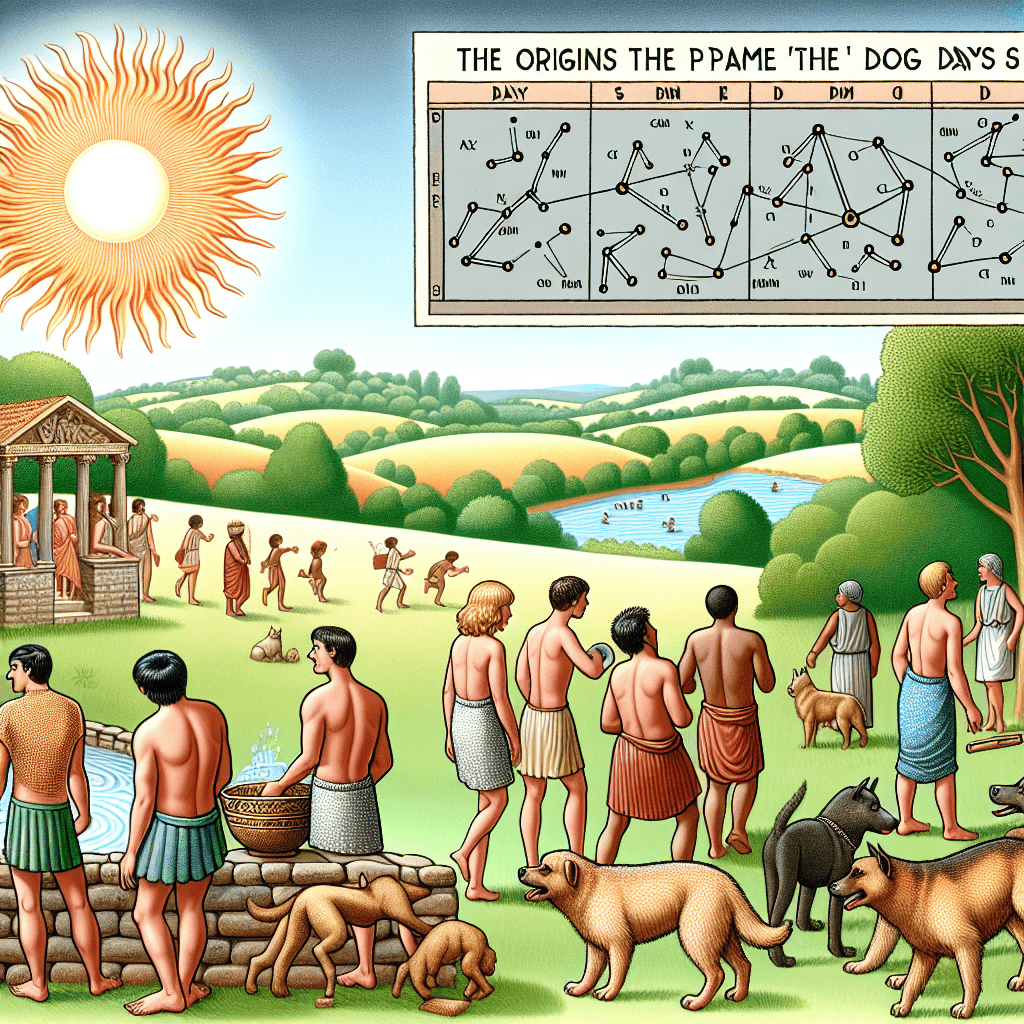Why do we call the hottest part of summer the dog days
It has nothing to do with panting pups seeking shade and everything to do with the brightest star in the night sky.


Too Long; Didn't Read
The term dog days has nothing to do with lazy canines. It refers to the period when Sirius, the Dog Star, rises with the sun. Ancient Romans believed the star's energy combined with the sun's to create the season's intense heat.
It's Not About Lazy Pups: Why Do We Call the Hottest Part of Summer the Dog Days?
When the air gets thick, the sun beats down relentlessly, and even the slightest movement feels like a marathon, you’ll often hear someone sigh, "We're in the dog days of summer." The phrase conjures images of lethargic dogs panting in the shade, too hot to do anything but lie still. While this picture is certainly fitting for the sweltering heat of late summer, the true origin of the term has nothing to do with lazy canines on Earth. Instead, it’s a story written in the stars, passed down from ancient civilizations that looked to the heavens for answers. This post will uncover the fascinating astronomical and historical roots of the "dog days" and explain how an ancient observation became our modern shorthand for the hottest part of the year.
An Astronomical Connection: Meet Sirius, the Dog Star
The real story behind the "dog days" begins not on the ground, but in the night sky with Sirius, the brightest star visible from Earth. Sirius is nicknamed the "Dog Star" because it is the most prominent star in the constellation Canis Major, which is Latin for "the Greater Dog."
For ancient civilizations like the Greeks, Romans, and Egyptians, the movement of the stars was deeply connected to life on Earth. They noticed that during the hottest time of the year—typically late July and August in the Northern Hemisphere—Sirius rose and set with the sun. This period, when the Dog Star appeared in the pre-dawn sky just before sunrise, is known as the "heliacal rising" of Sirius. Because the brilliant star was in the sky alongside the sun, the ancients believed that the heat from Sirius combined with the sun's energy to create the period of most intense heat and humidity.
The Romans took this observation and coined the term diēs caniculārēs, which translates to "days of the little dog," directly leading to our modern phrase, the "dog days."
More Than Just Heat: Ancient Beliefs and Bad Omens
The association between the Dog Star and summer went beyond just temperature. The ancient Romans considered this period a time of ill fortune. They linked the dog days to a range of unfortunate events, including:
- Drought and crop failure: The intense heat was seen as a threat to agriculture.
- Disease and fever: The oppressive conditions were believed to cause sickness in both humans and animals.
- Lethargy and madness: The phrase was associated with a general sense of sluggishness and, in some cases, even rabid dogs.
However, not all cultures viewed Sirius with dread. For the ancient Egyptians, the heliacal rising of Sirius held a much more positive meaning. It coincided with the annual flooding of the Nile River, a crucial event that irrigated their fields and ensured a bountiful harvest. For them, the Dog Star was a herald of life and prosperity, not a harbinger of doom.
The Dog Days in the Modern Era
So, when exactly are the dog days? While the ancient Romans marked the period from roughly July 24 to August 24, the timing has shifted. Due to a slight "wobble" in the Earth's axis, a phenomenon known as the precession of the equinoxes, the stars' positions in our sky have changed over the centuries. Today, the heliacal rising of Sirius occurs later in the year.
As a result, the term "dog days" has become detached from its precise astronomical origins. Instead, it's now a meteorological term. According to The Old Farmer's Almanac, the dog days are traditionally considered to be the 40 days beginning July 3 and ending August 11. This period generally coincides with the hottest, most sultry stretch of summer for most of the Northern Hemisphere, even though the Dog Star is no longer perfectly aligned with it.
Conclusion
The next time you find yourself languishing in the peak summer heat, you can share the true story behind the "dog days." What began as an ancient astronomical observation—the rising of the bright Dog Star, Sirius—has evolved over millennia into a familiar cultural expression. It’s a powerful reminder of how our ancestors looked to the cosmos to make sense of the world around them and how their celestial language continues to enrich our own. So, while you might see a dog panting in the shade, you’ll know the phrase isn’t just about them; it’s about a star shining brightly, 8.6 light-years away.
More Articles

Why is it safe to eat the mold in blue cheese but not on bread?
One mold is a carefully cultivated delicacy, while its cousin on your bread is growing dangerous, invisible toxins—we'll break down the crucial difference.

Why does fresh pineapple prevent gelatin desserts from becoming solid?
It's not a kitchen mistake; it's a case of culinary sabotage at the molecular level. Discover the powerful, protein-devouring enzyme in fresh pineapple that's actively digesting your dessert before it can even set.

Why are some ships deliberately fitted with metal blocks that are designed to be destroyed?
It sounds like madness, but these humble metal blocks are designed with a single, vital mission: to sacrifice themselves to the sea, preventing the ship's massive hull from being eaten alive.